Oklahoma, located in the southwestern region of the United States, is a state known for its stunning natural beauty, rich history, and vibrant culture. With its expansive prairies, towering mountains, and charming small towns, Oklahoma offers a unique blend of outdoor adventure and cultural experiences. To help visitors and residents navigate this beautiful state, we have created a detailed map of Oklahoma with cities and highways.
This map highlights Oklahoma’s major cities, including Oklahoma City, Tulsa, Lawton, and Norman, as well as its primary highways and roads. Whether you’re planning a road trip or simply want to explore Oklahoma’s unique landscape and culture, this map is an essential tool. So, grab your road map and get ready to discover all that Oklahoma has to offer, from its world-renowned museums to its charming small towns and everything in between.
Printable Oklahoma Map With Cities and Highways
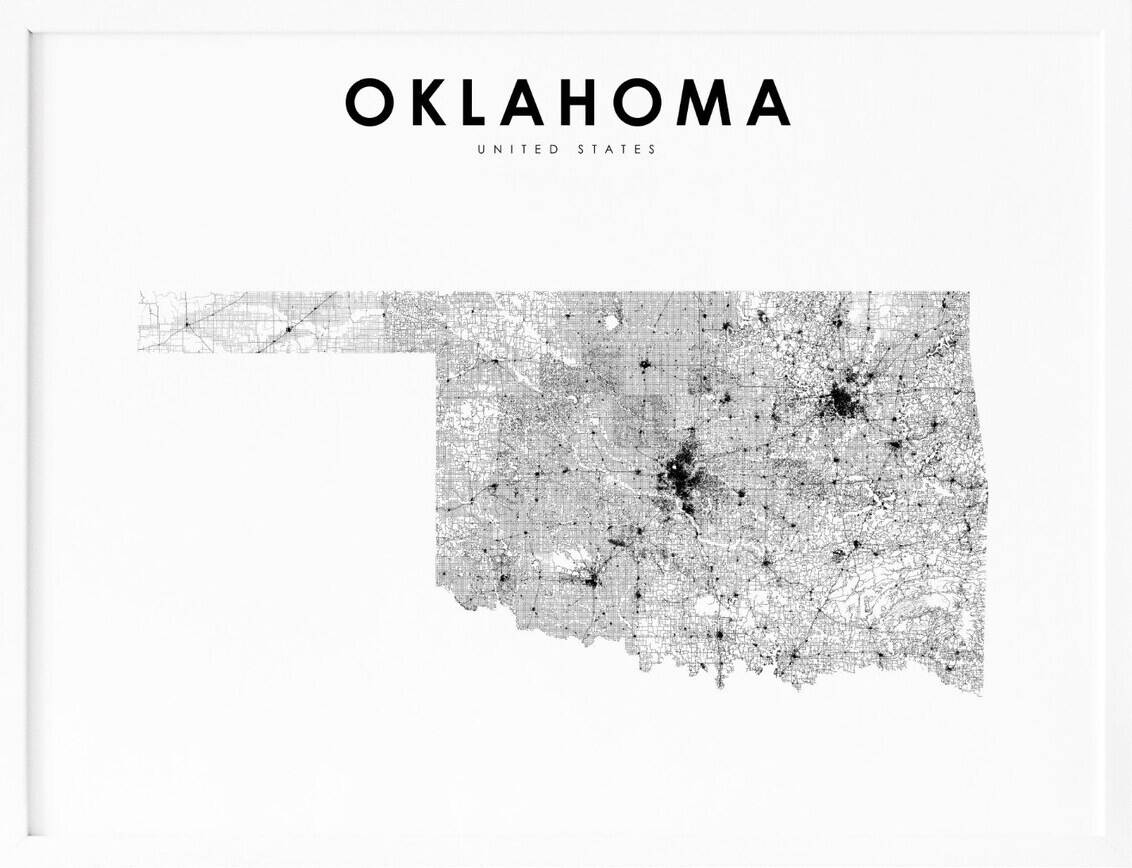
Cities
Ada
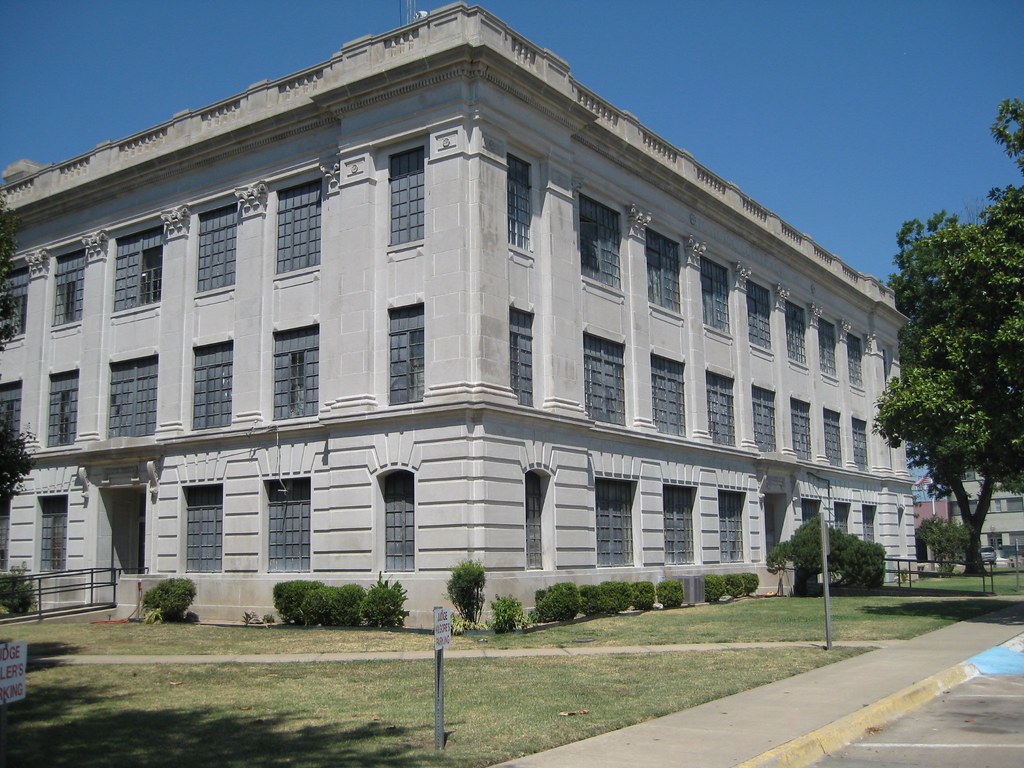
Ada is a vibrant city in the state of Oklahoma, serving as the county seat of Pontotoc County. The city has a population of 16,481 people as of the 2020 United States Census. Ada was named after Ada Reed, the daughter of an early settler, and was incorporated in 1901.
The city is home to East Central University, which offers a range of undergraduate and graduate programs to students from all over the world. Additionally, Ada is the capital of the Chickasaw Nation, which has a significant presence in the city.
Ada is known for its historic downtown area and is an Oklahoma Main Street City, an Oklahoma Certified City, and a Tree City USA member. With its rich history, thriving community, and abundant natural beauty, Ada is a wonderful place to live, work, and visit in Oklahoma.
Altus

Altus is a charming city located in Jackson County, Oklahoma, serving as the county seat. The city has a population of 18,729 people as of the 2020 census. Altus is home to Altus Air Force Base, which serves as a training base for C-17, KC-46, and KC-135 aircrews of the United States Air Force.
In addition to its military presence, Altus is also home to Western Oklahoma State College and Southwest Technology Center, providing higher education and vocational training opportunities to the community.
The city is known for its beautiful parks, vibrant downtown area, and rich history. With its strong economy, friendly community, and abundance of recreational and cultural opportunities, Altus is a marvelous place to call home in Oklahoma.
Ardmore

Ardmore is a bustling city located in Carter County, Oklahoma, serving as the county seat. The city has a population of 24,725 people as of the 2020 census, marking a 1.8% increase from the 2010 census figure of 24,283. Ardmore is located at the junction of Interstate 35 and U.S. Highway 70, making it a hub for the 13-county region of South Central Oklahoma, also known as “Chickasaw Country”.
The city is also part of the Texoma region and is approximately 90 miles from both Oklahoma City and Dallas/Fort Worth, Texas. Ardmore is situated near the Arbuckle Mountains and is located at the eastern margin of the Healdton Basin, one of the most oil-rich regions in the United States.
The city was named after Ardmore in County Waterford, Ireland, and the name means high grounds or hills in Irish. With its rich heritage, bustling economy, and abundance of natural beauty, Ardmore is a great place to live, work, and visit in Oklahoma.
Bartlesville

Bartlesville is a thriving city located mostly in Washington County, Oklahoma, with a population of 37,290 people as of the 2020 census. The city is situated 47 miles north of Tulsa and 18 miles south of the Kansas border, and it serves as the county seat of Washington County.
The Caney River runs through Bartlesville, adding to its natural beauty. Bartlesville is the primary city of the Bartlesville Micropolitan area, which consists of Washington County and had a population of 51,843 in 2018. A small portion of the city is in Osage County. The city is also part of the Tulsa Combined Statistical Area, with a population of 1,151,172 in 2015.
Bartlesville is notable for its history as the longtime home of Phillips Petroleum Company, which was founded in the city by Frank Phillips in 1905. Although the company has moved its corporate headquarters to Houston, both Phillips 66 and ConocoPhillips still maintain some operations in Bartlesville.
Additionally, Bartlesville is home to a Lenape Native American tribe, making it one of two places in Oklahoma where the tribe lives, the other being Anadarko. With its fascinating history, diverse community, and beautiful natural landscapes, Bartlesville is a fantastic destination in Oklahoma.
Bixby
Bixby is a beautiful city located in Tulsa and Wagoner counties, Oklahoma, and serves as a suburb of Tulsa. The city has a population of 28,609 people as of the 2020 census, marking an increase of 13.70 percent from the 2010 census figure of 20,884. In 2010, Bixby became the 19th largest city in Oklahoma.
Bixby is known as “The Garden Spot of Oklahoma” for its rich agrarian heritage, and it remains a sod-growing center and a popular location for purchasing fresh vegetables. Despite being one of the fastest-growing communities in Oklahoma, Bixby has maintained its small-town charm and close-knit community feel.
The per capita income of $36,257 is the highest in the Tulsa Metropolitan area and is more than 50 percent higher than the state average, making it a prosperous city. In 2009, CNN Money.com placed Bixby at No. 67 on its list of 100 Best Places to Live. With its beautiful parks, excellent schools, and strong economy, Bixby is a fantastic place to call home in Oklahoma.
Broken Arrow
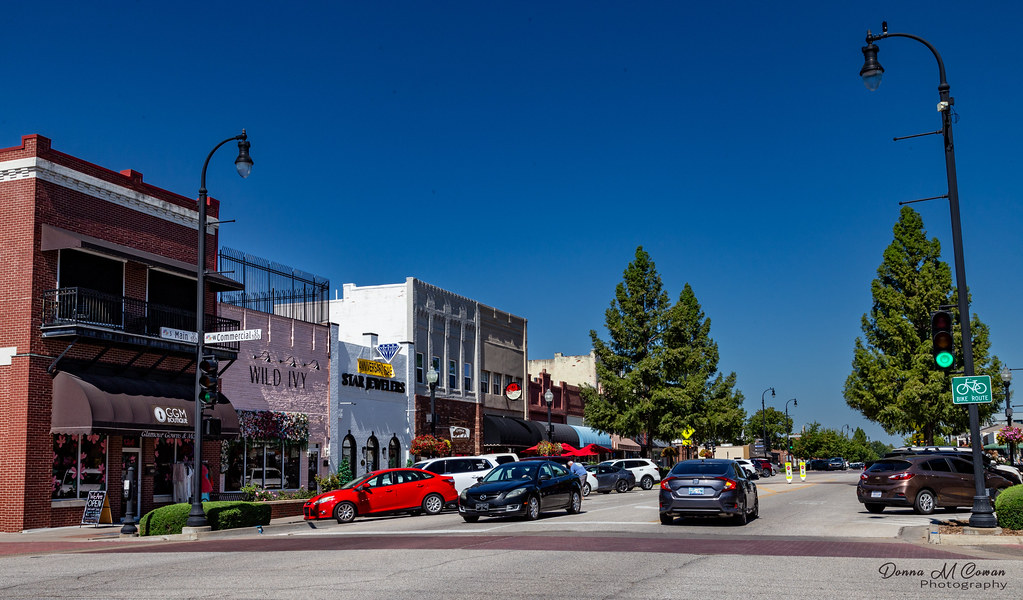
Broken Arrow is a bustling city located in the northeastern part of Oklahoma, primarily in Tulsa County, with a portion in western Wagoner County. It is the largest suburb of Tulsa and has a population of 113,540 residents as of the 2020 census, making it the fourth-largest city in the state. The city is part of the Tulsa Metropolitan Area, which has a population of 1,023,988 residents.
Broken Arrow was founded in 1902 when the Missouri-Kansas-Texas Railroad sold lots for the town site, and it was named after a Creek community settled by Creek Indians who had been forced to relocate from Alabama to Oklahoma along the Trail of Tears.
Although Broken Arrow was initially an agricultural community, its current economy is diverse, with the third-largest concentration of manufacturers in the state. With its strong economy, excellent schools, and exciting recreational opportunities, Broken Arrow is a satisfying place to live in Oklahoma.
Chickasha
Chickasha is a charming city located in Grady County, Oklahoma, serving as the county seat. The city has a population of 16,051 people as of the 2020 census, marking a 0.1% increase from 2010.
Chickasha is home to the University of Science and Arts of Oklahoma, which offers a range of undergraduate programs to students from all over the world. The city is named for and strongly connected to Native American heritage, as “Chickasha” (Chikashsha) is the Choctaw word for Chickasaw.
Chickasha is known for its rich heritage, vibrant culture, and beautiful outdoor spaces. The city hosts an annual festival of lights, showcasing the stunning holiday light displays throughout the town. With its diverse community, strong economy, and glorious natural beauty, Chickasha is a brilliant local destination.
Claremore
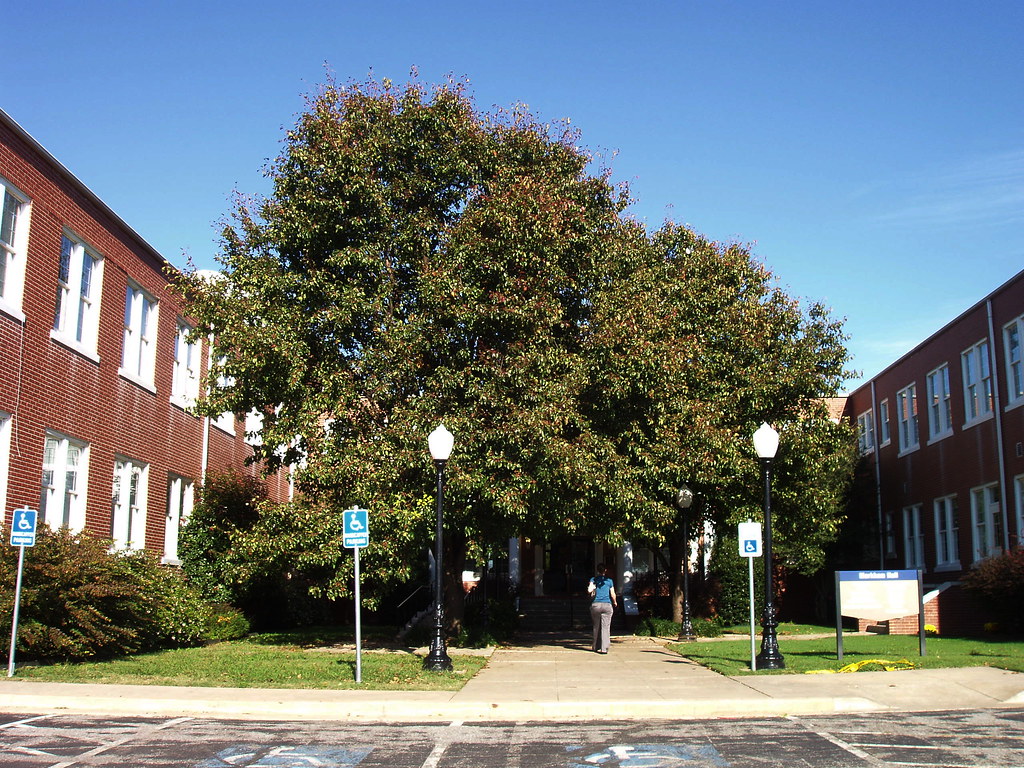
Claremore is a charming city located in Green Country or northeastern Oklahoma, serving as the county seat of Rogers County. The city has a population of 19,580 people as of the 2020 census, marking a 5.4 percent increase from the 2010 census figure of 18,581. Located in the foothills of the Ozark Mountains, Claremore is home to Rogers State University, offering a range of undergraduate and graduate programs to students from all over the world.
The city is best known as the home of early 20th-century entertainer Will Rogers, and it boasts several museums and monuments dedicated to his life and legacy. This area was once part of the territory of the Osage, but they were forced out under a treaty with the United States.
During the Indian Removal period and until statehood, this area was a reserve of the Cherokee Nation, which had been removed from its territory in the Southeast United States. This was within what was known as the Cherokee Cooweescoowee. With its rich history, vivacious culture, and beautiful natural surroundings, Claremore is a lovely location in Oklahoma.
Duncan

Duncan is an energetic city and the county seat of Stephens County, Oklahoma, with a population of 22,310 people as of the 2020 census. The city is known as the birthplace of the Halliburton Corporation, as Erle P. Halliburton established the New Method Oil Well Cementing Company in Duncan in 1919. Although the corporate offices have since relocated to Houston, Halliburton still maintains seven different complexes in Duncan plus an employee recreational park.
Centrally located in Stephens County, Duncan became the county seat after Oklahoma achieved statehood in 1907. The discovery of oil wells in Stephens County in 1918 led to rapid development, and although cotton was once a dominant crop, the Dust Bowl brought its decline.
Cattle remain an important part of the economy in Duncan, and the city is also home to the Chisholm Trail Heritage Center, celebrating the legacy of the historic Chisholm Trail that passed to the east of Duncan prior to the town’s founding. With its deep sense of history, diverse community, and robust economy, Duncan is a fulfilling place to live, work, and visit in Oklahoma.
Durant
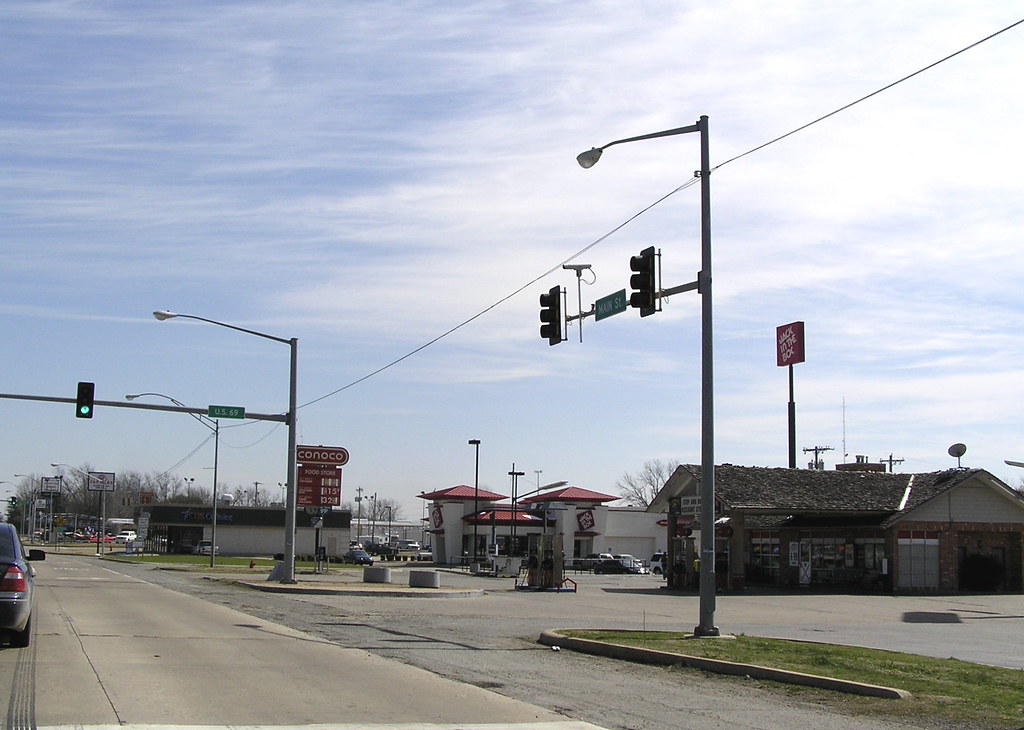
Durant is a vibrant city located in Bryan County, Oklahoma, serving as the headquarters of the Choctaw Nation of Oklahoma. The city has a population of 18,589 people as of the 2020 census and is the principal city of the Durant Micropolitan Statistical Area, which had a population of 46,067 in 2020. Durant is the largest city in the Choctaw Nation, ranking ahead of McAlester and Poteau.
The city is also part of the Dallas-Fort Worth Combined Statistical Area, anchoring the northern edge. Durant was founded by Dixon Durant, a Choctaw who lived in the area after the MK&T railroad came through the Indian Territory in the early 1870s. It became the county seat of Bryan County in 1907 after Oklahoma statehood.
Durant is home to Southeastern Oklahoma State University and the headquarters of the Choctaw Nation, and it is officially known as the Magnolia Capital of Oklahoma. The city and its micropolitan area are a major part of the Texoma region, known for its natural beauty and recreational opportunities. With its wonderful heritage, exciting community, and vigorous economy, Durant is a great place to call home in Oklahoma.
Edmond
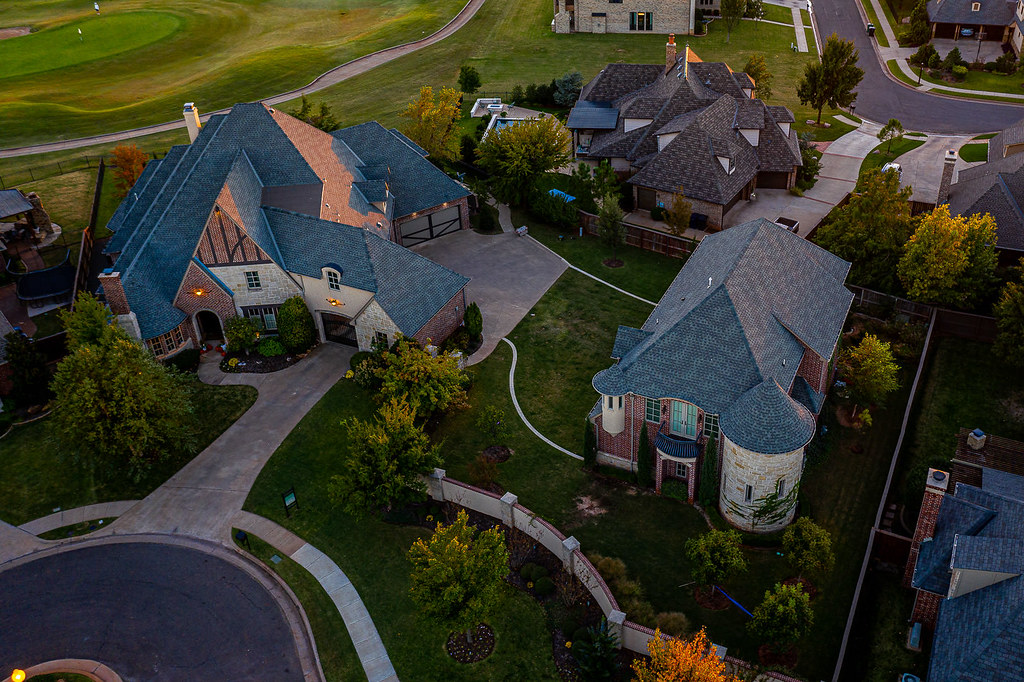
Edmond is located in Oklahoma County, Oklahoma, and is a part of the Oklahoma City metropolitan area in the central part of the state. The city has a population of 94,428 people as of the 2020 United States Census, marking a 16% increase from 2010, and making it the fifth largest city in Oklahoma.
Edmond borders the northern boundary of Oklahoma City, providing residents with easy access to all that the bustling metropolis has to offer. The city’s excellent public transportation system is provided by Citylink Edmond bus service, which offers a range of routes and schedules to meet the needs of residents and visitors alike.
Edmond is known for its excellent schools, strong economy, and abundance of recreational opportunities, making it a fantastic place to call home in Oklahoma. With its thriving community, beautiful parks, and top-notch amenities, Edmond is a splendid city to live, work, and visit.
El Reno

El Reno is a delightful city located in Canadian County, Oklahoma, serving as the county seat. The city has a population of 16,989 people as of the 2020 census, marking a change of 1.55% from the 2010 census figure of 16,729. The city was founded shortly after the 1889 land rush and named for the nearby Fort Reno.
Located in Central Oklahoma, El Reno is situated about 25 miles (40 km) west of downtown Oklahoma City. The city is known for its rich history, vibrant culture, and beautiful natural surroundings. Visitors can explore the historic Fort Reno, which played an important role in the Indian Wars and served as a military post until 1949.
El Reno is also home to several museums, art galleries, and community events throughout the year. With its excellent schools, strong economy, and abundance of recreational opportunities, El Reno is a fantastic place to call home in Oklahoma.
Elk City

Elk City is a charming city located in Beckham County, Oklahoma, with a population of 11,561 people as of the 2020 census, marking a slight decrease from the 2010 census figure of 11,693. The city is located on Interstate 40 and Historic U.S. Route 66 in western Oklahoma, approximately 110 miles (180 km) west of Oklahoma City and 150 miles (240 km) east of Amarillo, Texas.
Elk City is known for its rich history, vibrant culture, and beautiful natural surroundings. Visitors can explore the National Route 66 Museum, which showcases the history of the iconic highway and its impact on American culture.
The city is also home to several parks, lakes, and outdoor recreational areas, providing residents and visitors with ample opportunities to enjoy the great outdoors. With its superb schools, bustling economy, and friendly community, Elk City is a marvelous place to live in Oklahoma.
Enid

Enid is an exciting city located in Garfield County, Oklahoma, serving as the county seat. With a population of 51,308 people as of the 2020 census, Enid is the ninth-largest city in the state. The city was founded during the opening of the Cherokee Outlet in the Land Run of 1893 and is named after Enid, a character in Alfred, Lord Tennyson’s Idylls of the King.
Enid is known for its rich history, vibrant culture, and beautiful natural surroundings. In 1991, the Oklahoma state legislature designated Enid the “purple martin capital of Oklahoma,” and the city is also known as the “Queen Wheat City” and “Wheat Capital” of Oklahoma and the United States for its immense grain storage capacity.
Enid has the third-largest grain storage capacity in the world, making it a hub for the agricultural industry. With its strong economy, excellent schools, and abundance of recreational opportunities, Enid is a fantastic place to call home in Oklahoma.
Guthrie
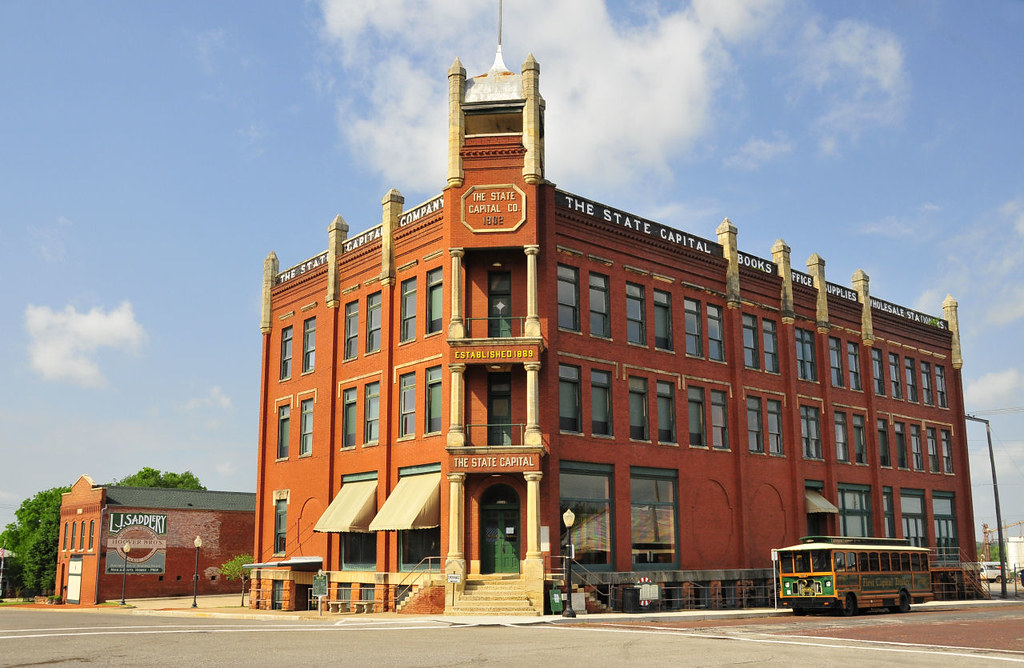
Guthrie is a characterful city and the county seat of Logan County, Oklahoma, located in the Oklahoma City Metroplex. The city has a population of 10,191 people as of the 2010 census, marking a 2.7 percent increase from the 2000 census figure of 9,925. Guthrie was first known as a railroad station stop, but after the Land Run of 1889, it immediately gained 10,000 new residents who began to develop the town.
It was rapidly improved and designated as the territorial capital, and in 1907, it became the first state capital of Oklahoma. In 1910, state voters chose the larger Oklahoma City as the new capital in a special election. Guthrie is nationally significant for its collection of late 19th and early 20th-century commercial architecture.
The Guthrie Historic District includes more than 2,000 buildings and is designated as a National Historic Landmark. Historic tourism is important to the city, and its Victorian architecture provides a backdrop for Wild West and territorial-style entertainment, carriage tours, replica trolley cars, specialty shops, and art galleries.
McAlester

McAlester is a charming city located in Pittsburg County, Oklahoma, serving as the county seat. The city has a population of 18,363 people as of the 2010 census, marking a 3.4 percent increase from the 2000 census figure of 17,783.
The town gets its name from James Jackson McAlester, an early white settler and businessman who later became lieutenant governor of Oklahoma. Known as “J. J.”, McAlester married Rebecca Burney, the daughter of a full-blood Chickasaw family, which made him a citizen of the Chickasaw Nation.
McAlester is the home of the Oklahoma State Penitentiary, the former site of an “inside the walls” prison rodeo that ESPN’s SportsCenter once broadcast. The city is also home to many of the employees of the McAlester Army Ammunition Plant, which is responsible for making essentially all the bombs used by the United States military.
In 1998, McAlester became the home of the Defense Ammunition Center (DAC), which moved from Savanna, Illinois, to the McAlester Army Ammunition Plant. With its strong economy, excellent schools, and abundance of recreational opportunities, McAlester is a fantastic place to call home in Oklahoma.
Miami

Miami is a brilliant city located in Ottawa County, Oklahoma, serving as the county seat. The city was founded in 1891 and is the capital of the federally recognized Miami Tribe of Oklahoma, after which it is named. The Modoc Tribe of Oklahoma, the Ottawa Tribe of Oklahoma, the Peoria Tribe of Indians, and the Shawnee Tribe also call Miami home. The area was part of Indian Territory before becoming a city.
Lead and zinc mining were established by 1918, causing the area’s economy to boom. As of the 2020 census, the population was 12,969 people, and the city is known for its rich history, vibrant culture, and beautiful natural surroundings. Visitors can explore the Coleman Theatre, a stunning historic landmark that hosts concerts, plays, and other events throughout the year.
The city is also home to several parks, lakes, and outdoor recreational areas, providing residents and visitors with ample opportunities to enjoy the great outdoors. With its excellent schools, strong economy, and friendly community, Miami is a welcoming destination in Oklahoma.
Midwest City
Midwest City is a thriving city located in Oklahoma County, Oklahoma and a part of the Oklahoma City metropolitan area. With a population of 58,409 people as of the 2020 census, it is the eighth-largest city in the state.
The city was developed in response to talk of an airfield being located nearby and was named for the Tinker Air Force Base’s original designation as the Midwest Air Depot. Midwest City is known for its vigorous economy, marvelous schools, and beautiful parks and recreational areas.
The city suffered damage during two tornadoes, the first in May 1999 and the second on May 8, 2003. Despite the damage caused by these natural disasters, the city has persevered and continues to thrive. With its friendly community, diverse culture, and abundance of recreational opportunities, Midwest City is a brilliant place to visit or live.
Moore
Moore is a bustling city located in Cleveland County, Oklahoma and part of the Oklahoma City metropolitan area. With a population of 62,793 people as of the 2020 census, it is the seventh-largest city in the state of Oklahoma. The city is situated between Oklahoma City and Norman and is known for its strong economy, excellent schools, and beautiful parks and recreational areas.
Unfortunately, Moore has been the site of several devastating tornadoes, with those occurring in 1999 and 2013 receiving international attention. In fact, the three costliest tornadoes in Oklahoma history all occurred in Moore. Despite these natural disasters, the city has persevered and continues to thrive. With its friendly community, diverse culture, and abundance of recreational opportunities, Moore is a fantastic place to call home in Oklahoma.
Muskogee
Muskogee is a lively city located in Muskogee County, Oklahoma, serving as the county seat. With a population of 36,878 people as of the 2020 census, it is the thirteenth-largest city in Oklahoma. Home to Bacone College, the city lies approximately 48 miles (77 km) southeast of Tulsa and is known for its rich history, vibrant culture, and beautiful natural surroundings.
Visitors can explore the Five Civilized Tribes Museum, which showcases the history and culture of the Cherokee, Chickasaw, Choctaw, Muscogee Creek, and Seminole tribes. The city is also home to Honor Heights Park, a sweeping 132-acre park that features beautiful gardens, walking trails, and picnic areas.
Despite a 6.0 percent decrease in population from 2010 to 2020, Muskogee continues to thrive with its strong economy, excellent schools, and friendly community. With its diverse culture and abundance of recreational opportunities, Muskogee is a welcoming place to live in Oklahoma.
Mustang
Mustang is a charming city located in the southeastern corner of Canadian County, Oklahoma, and part of the Oklahoma City metropolitan statistical area. With a population of 19,879 people as of the 2020 census, it has seen a 14.3% increase from 17,398 in 2010. The city is primarily known as a bedroom community for Oklahoma City, with many residents commuting to the larger city for work.
Mustang is known for its strong economy, excellent schools, and beautiful parks and recreational areas. The city is home to several parks, including Wild Horse Park, which features a splash pad, playground, and walking trails.
Mustang is also home to several annual events, including the Mustang Roundup Club Rodeo and the Western Days Festival, which celebrates the city’s Western heritage. With its friendly community, diverse culture, and abundance of recreational opportunities, Mustang is a fantastic place to call home in Oklahoma.
Norman
Norman is a pleasing city located in Cleveland County, Oklahoma, and is the third-most populous city in the state, with a population of 128,026 people as of the 2020 census. It is the most populous city and the county seat of Cleveland County and the second-most populous city in the Oklahoma City metropolitan area after the state capital, Oklahoma City, which is located 20 miles (32 kilometers) north of Norman.
The city was settled during the Land Run of 1889 and was named in honor of Abner Norman, the area’s initial land surveyor. Norman is home to the University of Oklahoma, the largest university in the state, with nearly 32,000 students. The university is well-known for its sporting events by teams under the banner of the nickname “Sooners”, with over 85,000 people routinely attending football games.
The city is also home to several museums, including the Fred Jones Jr. Museum of Art and the Sam Noble Oklahoma Museum of Natural History. Norman’s National Weather Center houses a unique collection of university, state, federal, and private-sector organizations that work together to improve the understanding of events related to the Earth’s atmosphere. With its great economy, strong school system, and abundance of recreational opportunities, Norman is waiting for you with open arms.
Oklahoma City
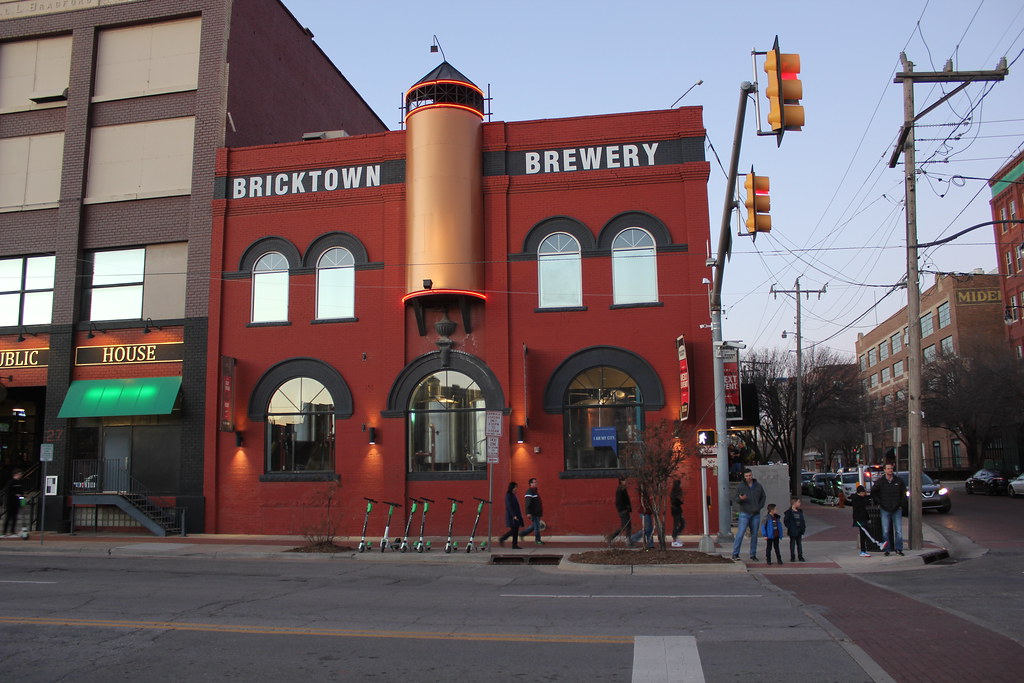
Oklahoma City, also known as OKC, is the capital and largest city of the U.S. state of Oklahoma. With a population of 681,054 people as of the 2020 census, it ranks 20th among United States cities in population and is the 8th largest city in the Southern United States. The Oklahoma City metropolitan area had a population of 1,396,445, making it Oklahoma’s largest municipality and metropolitan area by population.
The city is the eighth-largest in the United States by area, including consolidated city-counties, and is the second-largest, after Houston, not including consolidated cities. Oil, natural gas, petroleum products, and related industries are the largest sectors of Oklahoma City’s economy, with one of the world’s largest livestock markets.
The city is also home to Tinker Air Force Base and the United States Department of Transportation’s Mike Monroney Aeronautical Center. Oklahoma City is located on the I-35 and I-40 corridors, providing easy access to neighboring states and Mexico.
The city has a rich history, having been founded during the Land Run of 1889 and being the site of the April 19, 1995, bombing of the Alfred P. Murrah Federal Building, the deadliest act of domestic terrorism in U.S. history until the attacks of September 11, 2001. Despite being struck by 14 violent tornadoes since 1890, Oklahoma City continues to thrive with its great economy and welcoming community.
Okmulgee

Okmulgee is a city located in Okmulgee County, Oklahoma, and serves as the county seat. The name Okmulgee is derived from the Mvskoke word “okimulgee,” which means “boiling waters,” a reference to the nearby rivers and springs. With its rich history and natural beauty, Okmulgee is a popular destination for visitors and residents alike.
The city is located 38 miles south of Tulsa and 13 miles north of Henryetta via US-75, making it easily accessible from neighboring cities. Okmulgee is known for its strong economy, excellent schools, and beautiful parks and recreational areas. Visitors can explore the Okmulgee Lake and Recreation Area, which offers fishing, boating, and camping opportunities.
The city is also home to the Creek Nation Council House Museum, which showcases the history and culture of the Muscogee (Creek) Nation. With its friendly community, diverse culture, and variety of recreational pursuits, Okmulgee is a marvelous destination in Oklahoma.
Owasso
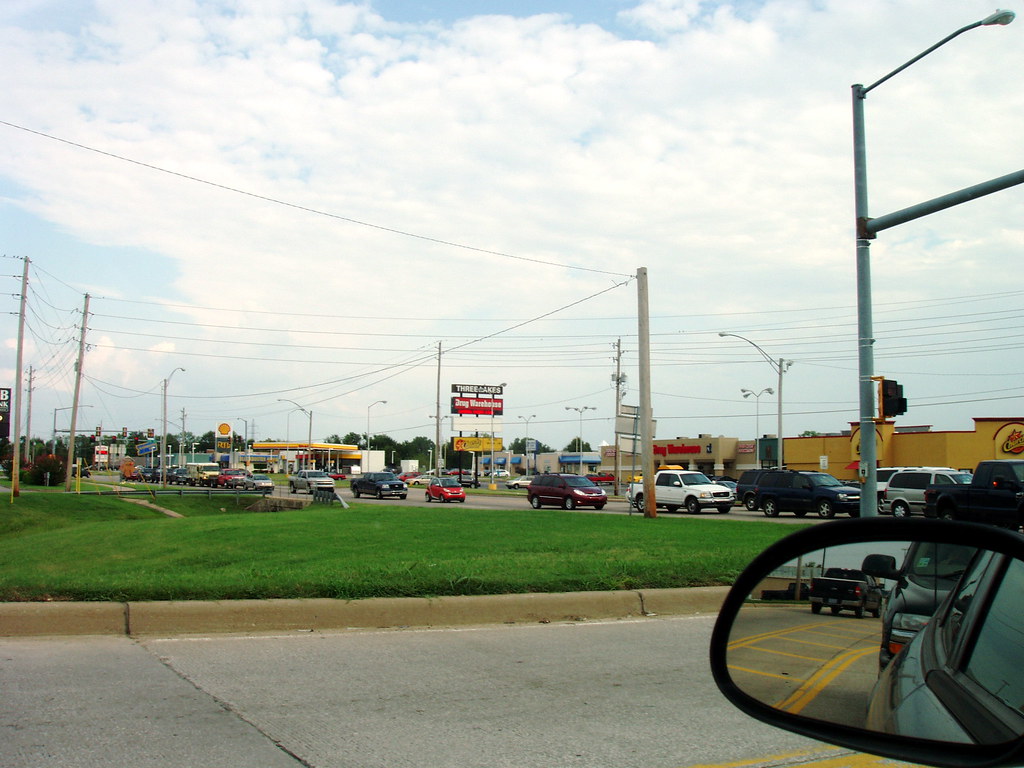
Owasso is a thriving city located in Rogers and Tulsa Counties in the U.S. state of Oklahoma and is the largest northern suburb of Tulsa. With a population of 39,328 people as of the 2022 census estimate, it has seen a gain of 36 percent from 28,915 at the 2010 census.
Originally settled in 1881 in Indian Territory, the town was incorporated in 1904 just before Oklahoma statehood, and was chartered as a city in 1972. Owasso is known for its strong economy, excellent schools, and beautiful parks and recreational areas. Visitors can explore Centennial Park, which features a splash pad, playground, and walking trails.
The city is also home to several annual events, including the Owasso Harvest Festival and the Owasso Christmas Parade. With its friendly locals, exciting culture, and an array of recreational opportunities, Owasso is a tremendous place to call home in Oklahoma.
Ponca City

Ponca City is a city located in Kay County in the U.S. state of Oklahoma. The city was named after the Ponca tribe and has a rich history and culture. With a population of 24,424 people as of the 2020 census, Ponca City is a thriving community known for its strong economy, excellent schools, and beautiful parks and recreational areas.
Visitors can explore the Marland Estate Mansion, which was once the home of oil baron E. W. Marland and is now a museum showcasing the history and culture of the area. The city is also home to several annual events, including the Ponca City Herb Festival and the Ponca City Oktoberfest. With its welcoming community, diverse culture, and abundance of recreational pursuits, Ponca City is a fantastic local spot to visit or settle down in.
Sand Springs
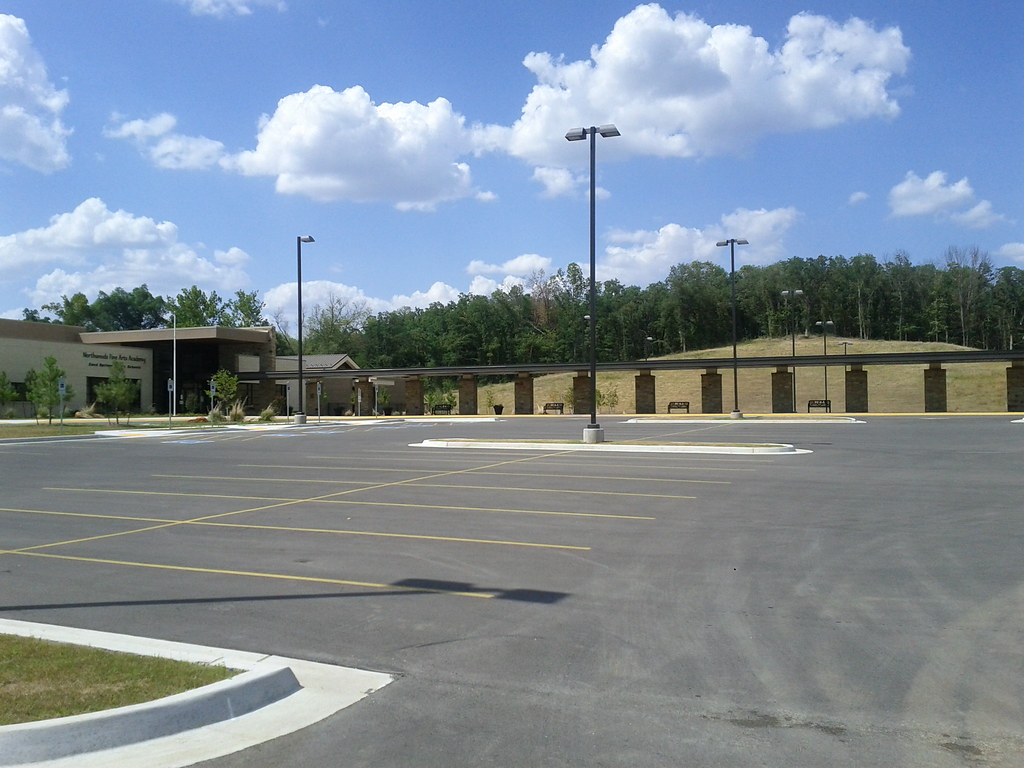
Sand Springs is a city located in Osage, Creek, and Tulsa counties in the U.S. state of Oklahoma. As a western suburb of Tulsa, it is predominantly located in Tulsa County. With a population of 19,874 people as of the 2020 U.S. Census, Sand Springs is a thriving community known for its strong economy, excellent schools, and beautiful parks and recreational areas.
Visitors can explore the Keystone Ancient Forest, which offers hiking trails and stunning views of the surrounding landscape. The city is also home to several annual events, including the Herbal Affair and Festival and the Sand Springs Herbal Harvest. With its friendly community, energetic culture, and a multitude of outdoor opportunities, Sand Springs is a wonderful place to call home in Oklahoma.
Sapulpa

Sapulpa is a city located in Creek and Tulsa counties in the U.S. state of Oklahoma. With a population of 21,929 people as of the 2020 census, it has seen an increase from 20,544 at the 2010 census. Sapulpa is the county seat of Creek County and is known for its rich history and culture.
Visitors can explore the Sapulpa Historical Museum, which showcases the history of the area and its people. The city is also home to several annual events, including the Route 66 Blowout and the Sapulpa Chautauqua. With its friendly people, diverse culture, and recreational opportunities, Sapulpa is a welcoming local spot.
Shawnee
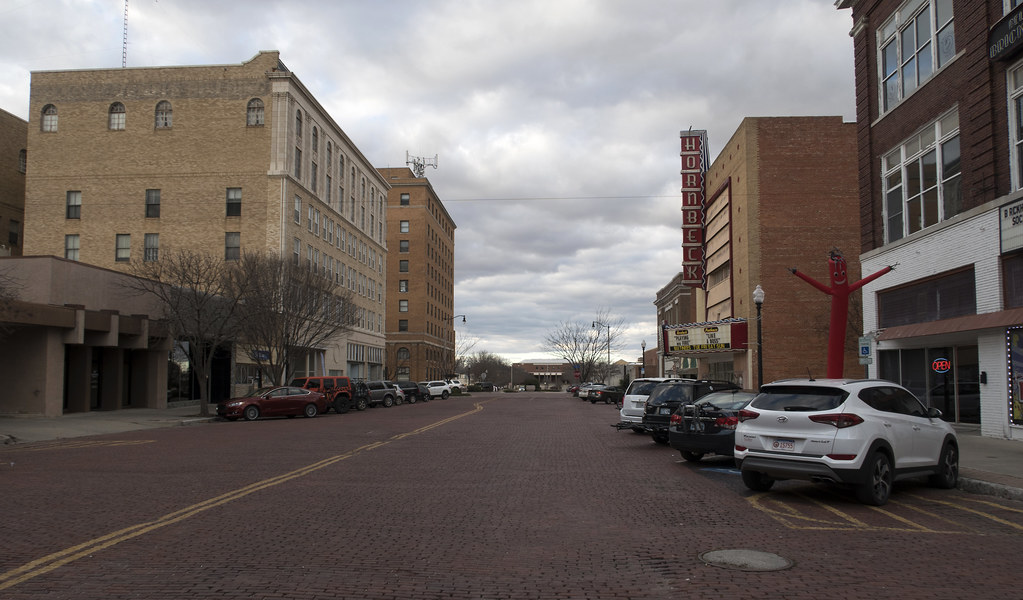
Shawnee is a vibrant city located in Pottawatomie County, Oklahoma, and serves as the county seat. With a population of 29,857 people in 2010, it has seen a 4.9 percent increase from the figure of 28,692 in 2000. Shawnee is part of the Oklahoma City-Shawnee Combined Statistical Area and the principal city of the Shawnee Micropolitan Statistical Area.
With access to Interstate 40, the city is approximately 45 minutes east of downtown Oklahoma City. Visitors can explore the Santa Fe Depot Museum, which showcases the history of the railroad and its impact on the area. The city is also home to several annual events, including the International Finals Youth Rodeo and the Shawnee Oktoberfest.
To the east and northeast, Shawnee is 112 miles from the McClellan-Kerr Arkansas River Navigation System, which provides shipping barge access to the Gulf of Mexico, making it a convenient and strategic location for businesses and industries.
Stillwater

Stillwater is a thriving city located in north-central Oklahoma and is the county seat of Payne County. With a population of 48,394 people as of the 2020 census, it is the tenth-largest city in the state. Stillwater was part of the first Oklahoma Land Run held on April 22, 1889, and became the core of the new Oklahoma Territory.
The city charter was adopted on August 24, 1889, and operates under a council-manager government system. Stillwater has a diverse economy with a foundation in aerospace, agribusiness, biotechnology, optoelectronics, printing and publishing, and software and standard manufacturing.
Visitors can explore the National Wrestling Hall of Fame and Museum, which showcases the history of wrestling in America. The city is also home to several annual events, including the Payne County Free Fair and the Stillwater Arts Festival. With its friendly community, diverse culture, and abundance of recreational opportunities, Stillwater is a fantastic place to call home in Oklahoma.
Stillwater is also home to the main campus of Oklahoma State University, the city’s largest employer, as well as Northern Oklahoma College – Stillwater, Meridian Technology Center, and the Oklahoma Department of Career and Technology Education.
Tulsa

Tulsa is a bustling city located in northeast Oklahoma and is the second-most populous city in the state after Oklahoma City. With a population of 413,066 people as of the 2020 census, it is the 47th-most populous city in the United States. Tulsa serves as the county seat of Tulsa County, the most densely populated county in Oklahoma, with urban development extending into Osage, Rogers, and Wagoner counties.
Historically, a robust energy sector fueled Tulsa’s economy, but today the city has diversified, and leading sectors include finance, aviation, telecommunications, and technology. Visitors can explore the Philbrook Museum of Art, which features a collection of American and European art, as well as the Tulsa Zoo, which is home to over 400 animal species.
The city is also home to several annual events, including the Tulsa State Fair and the Tulsa International Mayfest. With its friendly community, diverse culture, and abundance of recreational opportunities, Tulsa is a fantastic place to call home in Oklahoma.
Situated on the Arkansas River between the Osage Hills and the foothills of the Ozark Mountains, Tulsa is known as “Green Country” and is considered the cultural and arts center of Oklahoma, housing two art museums, full-time professional opera and ballet companies, and one of the nation’s largest concentrations of art deco architecture.
Interstates
Interstate 35

Interstate 35 (I-35) is a major highway in the state of Oklahoma, stretching 236 miles (380 km) from the Red River at the Texas border to the Kansas state line near Braman. I-35 forms the informal bisector for central Oklahoma, providing one of the main north-south corridors through the state along with US 81/US 283 in western Oklahoma and US 69/US 75 in the eastern portion.
The highway has one spur route in the state, I-235, located in the inner city of Oklahoma City. As a major interstate, I-35 plays a vital role in the transportation of goods and people throughout Oklahoma and beyond.
Interstate 40
Interstate 40 (I-40) is the longest interstate highway in Oklahoma, running 331 miles (533 km) across the state from Texas to Arkansas. West of Oklahoma City, it parallels and replaces old U.S. Highway 66 (US-66), while east of Oklahoma City, it parallels US-62, US-266, and US-64.
The highway passes through several major cities along its route, including Erick, Sayre, Elk City, Clinton, Weatherford, Oklahoma City and its suburbs (El Reno, Yukon, Del City, and Midwest City), Shawnee, Okemah, Henryetta, Checotah, and Sallisaw. As a major interstate, I-40 plays a key role in the transportation of goods and people throughout Oklahoma and beyond, connecting the state to other parts of the country.
Interstate 44
Interstate 44 (I-44) is a major highway in Oklahoma, running diagonally from the Texas state line near Wichita Falls to the Missouri border near Joplin. It connects three of Oklahoma’s largest cities: Oklahoma City, Tulsa, and Lawton. Most of I-44 in Oklahoma is a toll road, with the H.E. Bailey Turnpike in the southwestern part of the state and the Turner Turnpike connecting Oklahoma City and Tulsa.
As I-44 leaves Tulsa, it becomes the Will Rogers Turnpike to the Missouri border. The highway is paralleled by former U.S. Route 66 (US-66, now mostly State Highway 66 [SH-66]) from Oklahoma City to the Missouri state line. In the Lawton, Oklahoma City, and Tulsa metro areas, I-44 is toll-free. In Oklahoma City, I-44 is also known as the Will Rogers Expressway. As a major interstate, I-44 plays a chief role in the transportation of goods and people throughout Oklahoma and beyond.
Highways
Route 56
Route 56, also known as US-56, takes a diagonal slice across the western part of the Oklahoma Panhandle. US-56/64/412 enter Oklahoma near the southwest corner of the Panhandle, where they also enter Rita Blanca National Grassland.
After leaving the grassland near Felt, the routes enter Boise City, where they enter a traffic circle around the Cimarron County Courthouse that involves US-56, US-64, US-385, US-412, State Highway 3, and SH-325. US-56 overlaps with US-64, US-412, and SH-3 for a stretch before splitting to travel northeast on its own.
The route parallels the Cimarron Valley Railroad for the remainder of its time in Oklahoma, passing through Keyes before crossing into Texas County east of Sturgis. Just before crossing the Kansas line, US-56 meets the north end of SH-95. US-56 then enters Kansas on the east edge of Elkhart. While US-56’s path through Oklahoma is relatively short, it provides a vital connection between the Panhandle region and neighboring states.
Route 59
U.S. Highway 59 (US-59) runs along the eastern portion of the state of Oklahoma, covering a distance of 216.47 miles (348.37 km). The route takes travelers through the mountainous terrain of the eastern Oklahoma Ouachitas and Ozarks, showcasing the natural beauty of the region.
US-59 serves several lakes and towns through Oklahoma’s Green Country, including Grand Lake, a major recreation center. The highway enters the state from Arkansas near Fogel and ends at the Kansas state line south of Chetopa.
US-59’s route through Oklahoma has remained largely the same since its designation in 1935, with minor adjustments made over the years to provide a more direct route for travelers. Whether exploring the scenic beauty of the Ozarks or enjoying the recreational opportunities of Grand Lake, US-59 offers a memorable journey through eastern Oklahoma.
Route 60
U.S. Route 60 (US-60) is a transcontinental U.S. highway that covers a total of 352.39 miles (567.12 km) within the state of Oklahoma. The highway enters the state from Texas west of Arnett and serves many towns and cities in the northern part of the state, including Arnett, Seiling, Fairview, Enid, Ponca City, Pawhuska, Bartlesville, and Vinita.
US-60 exits Oklahoma near Seneca, Missouri. Along the way, US-60 has three business routes, serving Tonkawa, Ponca City, and Seneca. The first 60.2 miles (96.9 km) of the route, from the Texas line to Seiling, is also designated as State Highway 51 (SH-51).
US-60 was originally designated to end in Springfield, Missouri, but was extended west through Oklahoma to Amarillo, Texas, displacing US-164 in the process. Today, US-60 remains an important route for travelers traversing northern Oklahoma.
Route 62
U.S. Highway 62 (US-62) runs diagonally across the state of Oklahoma, covering a distance of 402.48 miles (647.73 km). The highway enters the state from the Texas state line in far southwestern Oklahoma and continues to the Arkansas state line near Fayetteville.
Along the way, US-62 passes through fifteen of Oklahoma’s counties and serves two of the state’s largest cities, Lawton and Oklahoma City, as well as many other regionally important cities, like Altus, Chickasha, Muskogee, and Tahlequah. Despite its significance, US-62 does not have any lettered spur routes like many other U.S. routes in Oklahoma.
US-62 has been a part of Oklahoma’s highway system since 1930 and includes concurrencies with I-44, I-240, I-35, and I-40. As a major route through the state, US-62 plays a principal role in connecting communities and facilitating travel and commerce.
Route 64
U.S. Route 64 (US-64) is a U.S. highway that runs from the Four Corners area to the Outer Banks of North Carolina, passing through the entire width of Oklahoma along the way. A total of 591.17 miles (951.40 km) of US-64 lies within the state of Oklahoma. The highway enters the state from New Mexico, crossing the line between the two states between Clayton, New Mexico, and Boise City in Cimarron County.
US-64 runs the full length of the Oklahoma Panhandle, then serves the northernmost tier of counties in the main body of the state before dipping southeastward to Tulsa, the state’s second-largest city. From Tulsa, the highway continues southeast, leaving Oklahoma just west of Fort Smith, Arkansas.
Along the way, US-64 serves fifteen Oklahoma counties and the cities of Guymon, Woodward, Enid, and Muskogee. US-64 has been a part of the United States Numbered Highways system since 1926 and has undergone several alterations over the years to improve its route through towns and increase its capacity.
Route 69

U.S. Route 69 (US-69) is a significant north-south U.S. Highway in Oklahoma, extending the corridor formed by U.S. Route 75 in Texas. The highway runs from Dallas northeast via McAlester and Muskogee to the Will Rogers Turnpike (Interstate 44) near Vinita.
From Vinita to the Kansas state line, US-69 generally parallels the turnpike along old U.S. Highway 66. US-69 is an important route for both commercial and personal travel, connecting major cities and towns in the eastern part of the state.
The highway passes through McAlester, known for its coal mining heritage, and Muskogee, a historic city with a vibrant arts and culture scene. US-69 also serves as a major transportation artery for the region’s agricultural products. Whether traveling for business or pleasure, US-69 provides a vital link between communities in Oklahoma and beyond.
Route 70
U.S. Route 70 (US-70) is a transcontinental U.S. highway that covers a total of 289.81 miles (466.40 km) within the state of Oklahoma. The highway enters the state south of Davidson and serves Oklahoma’s southern tier before exiting the state east of Broken Bow.
Along the way, US-70 passes through the cities of Ardmore, Durant, Hugo, and Idabel, as well as Tillman, Cotton, Jefferson, Carter, Marshall, Bryan, Choctaw, and McCurtain counties. US-70 has been a part of Oklahoma’s highway system since 1926 and has undergone several alterations to its route over the years.
The highway’s initial path included several deviations from the present-day route, serving Walters and following a more northerly course between Ardmore and Madill. The modern route between Ardmore and Madill was not established until 1984 when it received the US-70 designation. Today, US-70 remains an important route for travelers and commerce in southern Oklahoma.
Route 75

U.S. Route 75 (US-75) is a significant north-south highway that enters Oklahoma from Texas concurrent with US-69, crossing the Red River. The highway serves several communities in southern Oklahoma before reaching the city of Tulsa, the state’s second-largest city.
US-75 is a major transportation channel for the region, connecting Tulsa to other cities and towns in the state and beyond. The highway also serves as a vital link for commerce, facilitating the movement of goods and services throughout the region. As a major route through Oklahoma, US-75 plays a key role in the state’s economy and transportation infrastructure.
Route 77
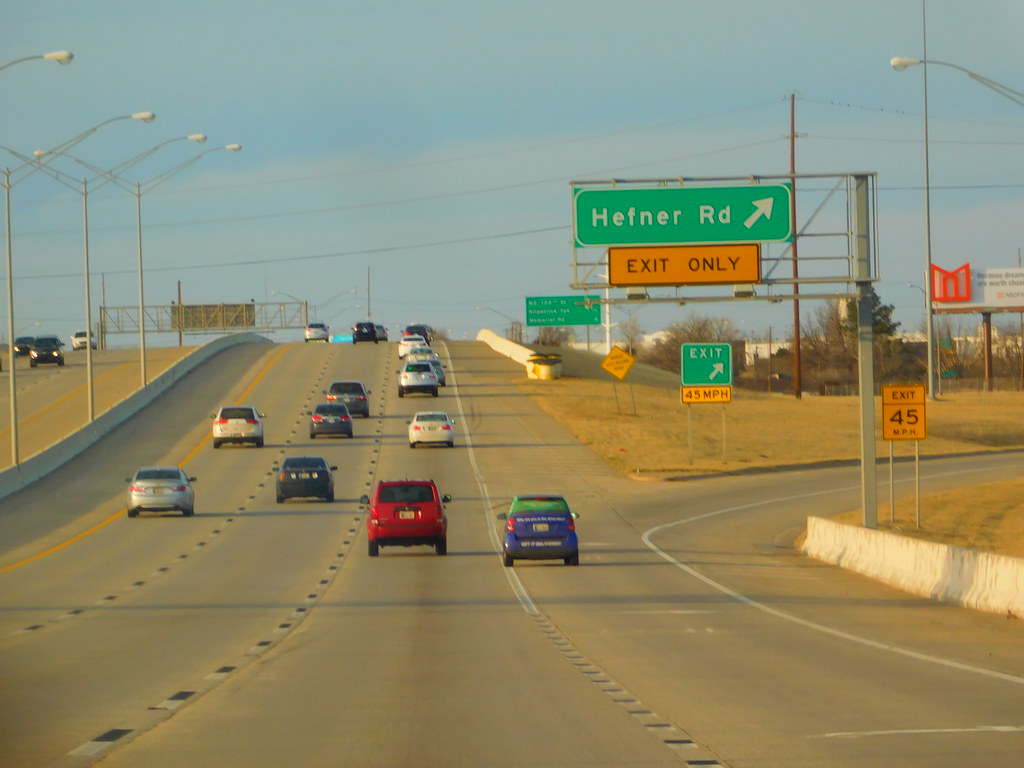
U.S. Highway 77 (US-77) in Oklahoma is a 267.21-mile-long (430.03 km) U.S. Highway that runs from south to north, paralleling Interstate 35 (I-35) and connecting Texas to Kansas through the central part of the state. The highway passes through many major cities, including Ardmore, Oklahoma City and its suburbs, Guthrie, and Ponca City.
US-77 has four lettered spur routes, providing additional access to communities along its route. US-77 was the first highway in Oklahoma to be paved entirely across the state from state line to state line and has been a paved roadway since 1930. Today, US-77 remains an important route for travelers and commerce, connecting communities and facilitating the movement of goods and services throughout the state.
Route 81
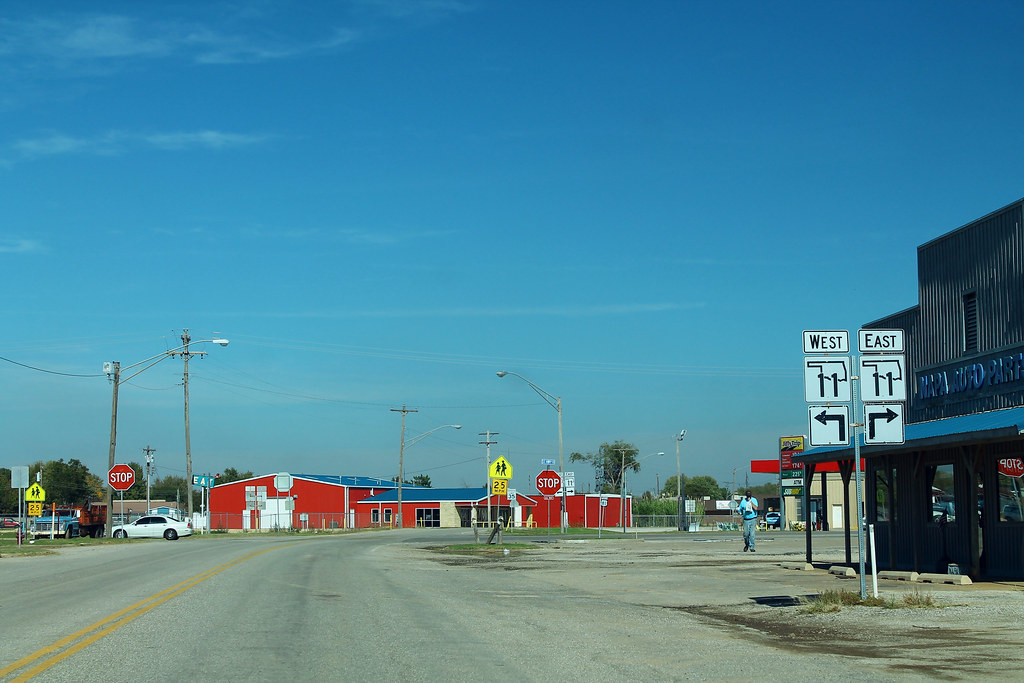
U.S. Route 81 (US-81) is a north-south U.S. highway that runs through the central United States’ Great Plains region, extending from Fort Worth, Texas to the U.S.-Canadian border at Pembina, North Dakota. A 229.28-mile (368.99 km) segment of the highway lies within the state of Oklahoma. US-81 crosses the Red River from Texas south of Terral and passes through several Oklahoma cities, such as Chickasha, El Reno, Kingfisher, and Enid, before entering Kansas north of Renfrow.
The route of US-81 was originally served by the Chisholm Trail, which was used to drive cattle from Texas to Abilene, Kansas. US-81 was established as a primary route of the U.S. highway system at the time of the system’s original designation and was established through Oklahoma on December 7, 1926. Today, US-81 remains an important route for travelers and commerce, connecting communities and easing the movement of goods and services throughout the state.
Route 169
U.S. Route 169 (US-169) is a U.S. highway that begins in Tulsa, southeast of Downtown. The highway is also known as the Mingo Valley Expressway and the Pearl Harbor Memorial Expressway in the Tulsa area. US-169 runs north through Oklahoma, passing through several communities before crossing the state line into Kansas.
The highway serves as an important transportation link for the region, connecting Tulsa to other cities and towns in Oklahoma and beyond. Along the way, US-169 passes through the heart of Tulsa, providing access to many of the city’s important landmarks and attractions. Whether traveling for business or pleasure, US-169 provides a vital link between communities in Oklahoma and beyond.
Route 177
U.S. Route 177 (US-177) is a U.S. highway that begins concurrent with State Highway 199 at the US-70 junction near Madill, Oklahoma. From this point, it heads northwest, serving as the southern terminus of State Highway 1 and the main street of Mannsville. The route turns northward in Dickson, where it splits from SH-199.
US-177 then runs through the Chickasaw National Recreation Area and the town of Sulphur, where it has a brief concurrency with SH-7. The highway continues northward, passing through several towns and communities before entering Payne County and serving the city of Stillwater, home to Oklahoma State University.
US-177 then passes through Kay County, serving the city of Ponca City before crossing into Kansas near Hunnewell. The highway ends at US-81 in downtown South Haven, Kansas, less than a mile from the western terminus of US-166 (also on US-81) north of town. US-177 is an important route for travelers and commerce, connecting communities and facilitating the movement of goods and services throughout Oklahoma and into Kansas.

